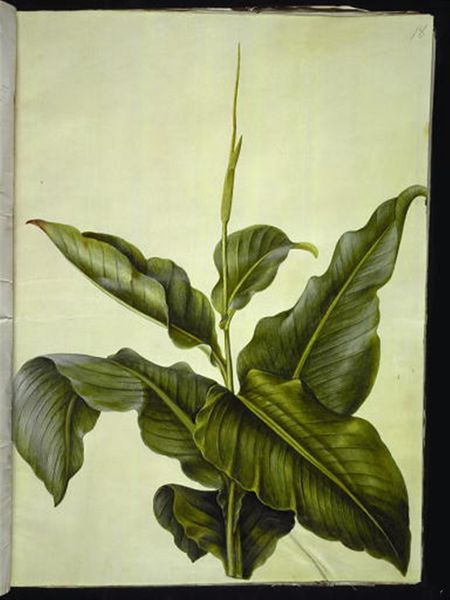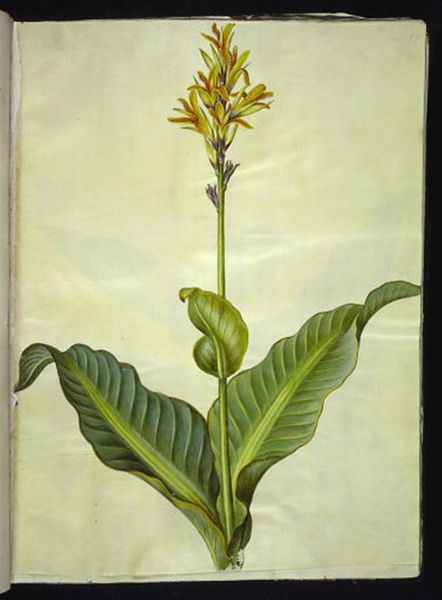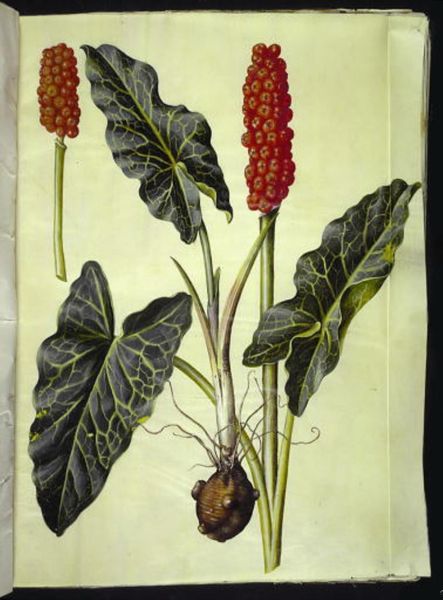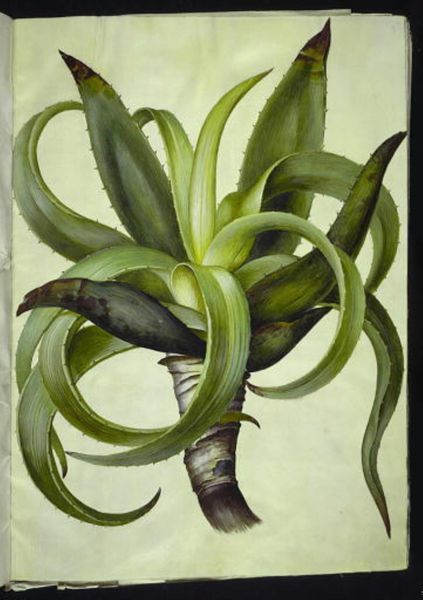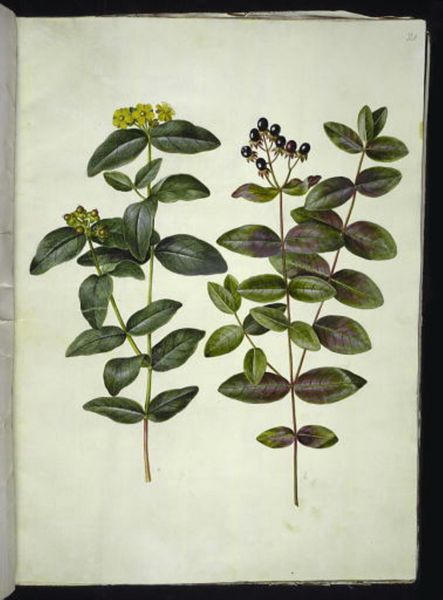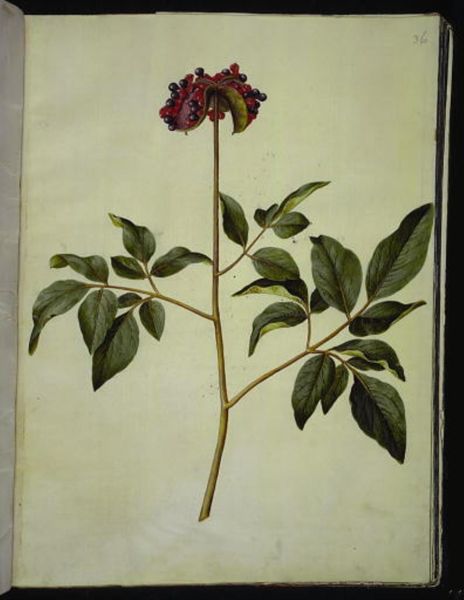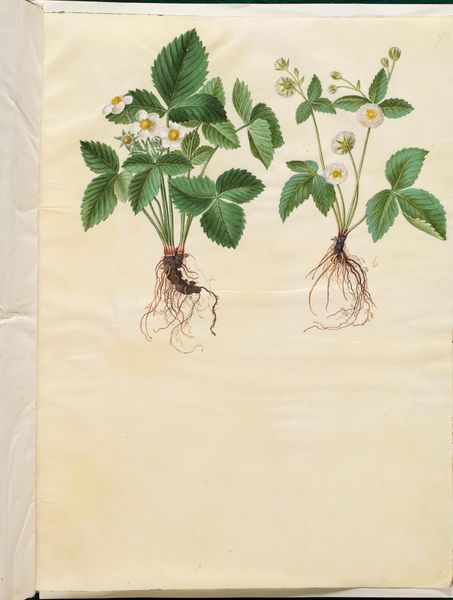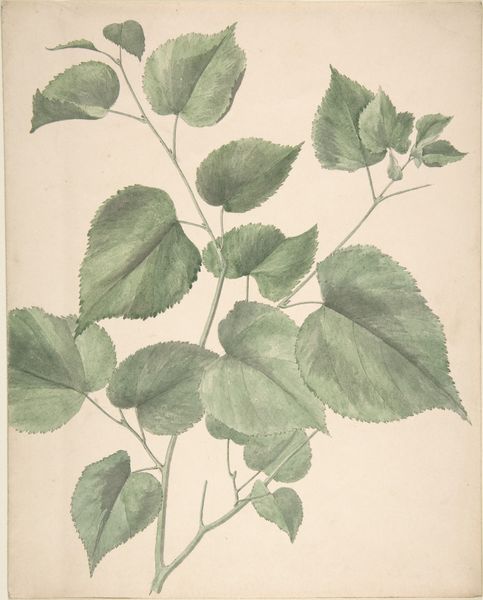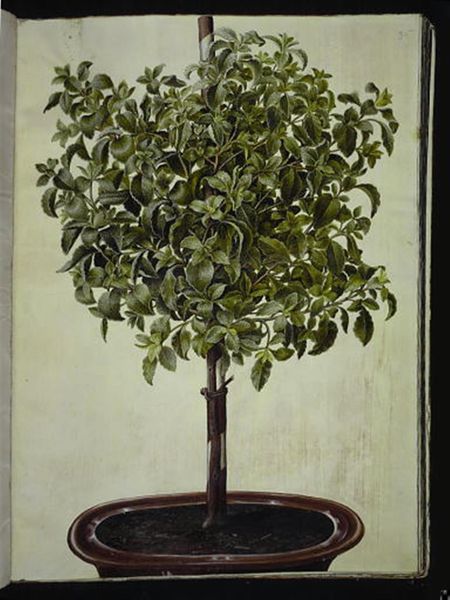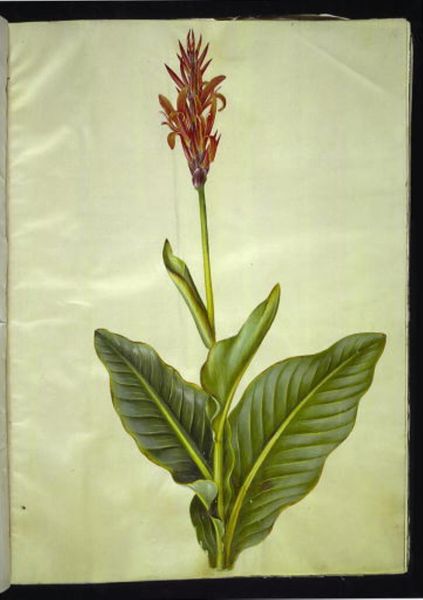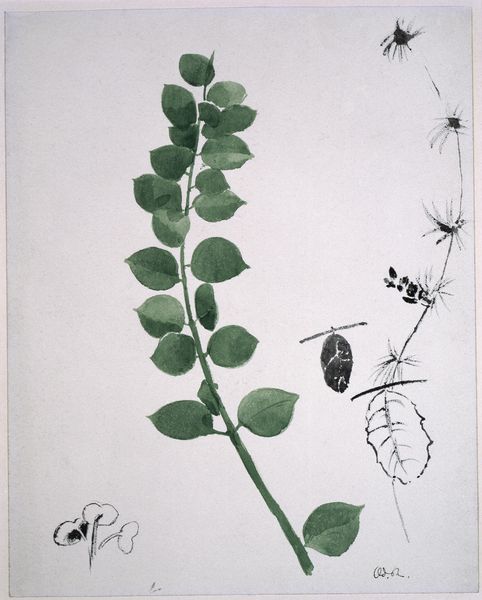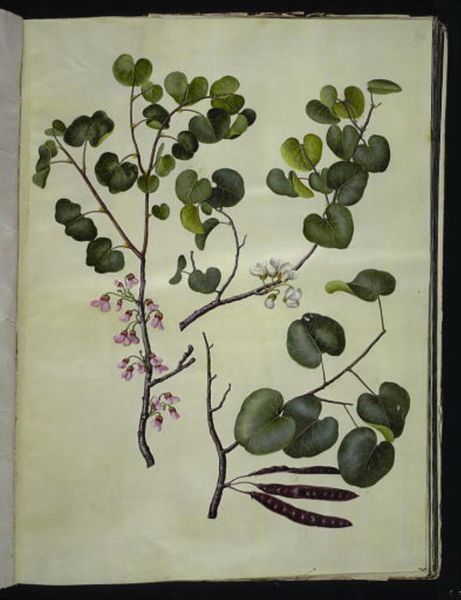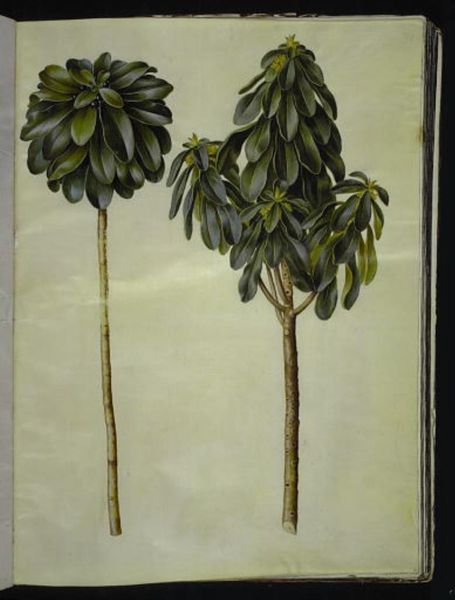
drawing, gouache, watercolor
#
drawing
#
baroque
#
dutch-golden-age
#
gouache
#
watercolor
#
watercolour illustration
#
realism
Dimensions: 505 mm (height) x 385 mm (width) (bladmaal)
Hans Simon Holtzbecker painted this image of Colocasia esculenta, or taro, in the 17th century. During this period, botanical illustrations were not merely scientific records, but also reflected the complex relationships between Europe and the rest of the world, especially through trade and colonialism. Holtzbecker's meticulous rendering of the taro plant invites us to consider its cultural significance. Taro is a staple food in many tropical regions, including parts of Asia and the Pacific. It is more than just sustenance, but also a symbol of cultural identity and ancestral connection. By bringing the taro plant into a European context, Holtzbecker's work highlights the global exchange of flora and its impact on European understanding of the natural world. Consider how the act of depicting this plant, far from its native soil, transforms it into an object of study and perhaps even desire. What stories and histories are embedded within this representation of taro, and how does it connect to broader narratives of exploration, exploitation, and cultural exchange?
Comments
No comments
Be the first to comment and join the conversation on the ultimate creative platform.
